Last Updated on April 26, 2023
Chihuahuas: we know them, we love them. But do they love us back? More importantly, how will they get along with our kids?
Pronounced “chih-wa-wa,” these spunky canines are known for their larger-than-life personalities.
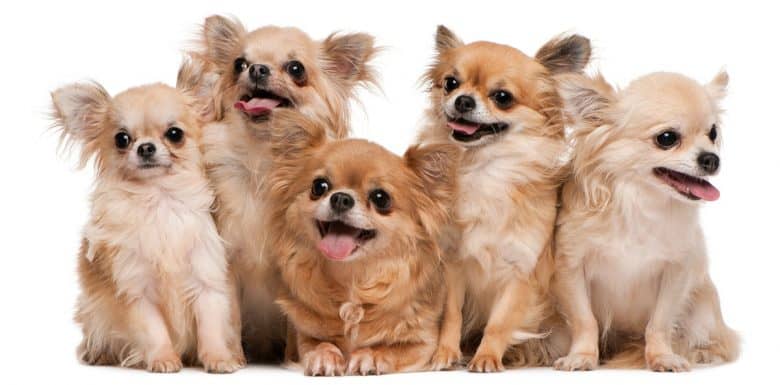
Whether you call them by Chihuahua, Chi, Chi-chi, or Hua-hua, these pups never run out of sass. Keep reading to decide if they pack the right amount of fire–or if they’re too hot to handle.
Quick Navigation
- 1 The Chihuahua’s origins: where do they come from?
- 2 What does a Chihuahua look like?
- 3 Temperament: are Chihuahuas good pets?
- 4 Caring for your Chihuahua dog
- 5 Are Chihuahuas healthy?
- 6 How much does a Chihuahua puppy cost?
- 7 How do other breeds compare to Chihuahuas?
- 8 Chihuahuas: What’s good and bad about ‘em
- 9 Further reading: More about Chihuahua
The Chihuahua’s origins: where do they come from?
There are two main theories about the Chi’s history.
Some contend that Spanish conquistadors brought these tiny dogs from China to the Americas. It’s said that the imported Chinese canines were then bred with other small dogs, giving us the modern Chihuahua.
A more widely-accepted school of thought holds that Chi-chis are native to South America, descended from the Techichi.
While we can’t prove that the Techichi is a direct ancestor of the Chihuahua, carvings of this archaic breed from the 9th-century sure look an awful lot like the Hua-hua.
Techichi dogs were an integral part of Mexico’s ancient Toltec and Aztec civilizations. Just what purpose the Techichi served for the Toltecs is unclear. For the Aztecs, however, Techichis held great significance.
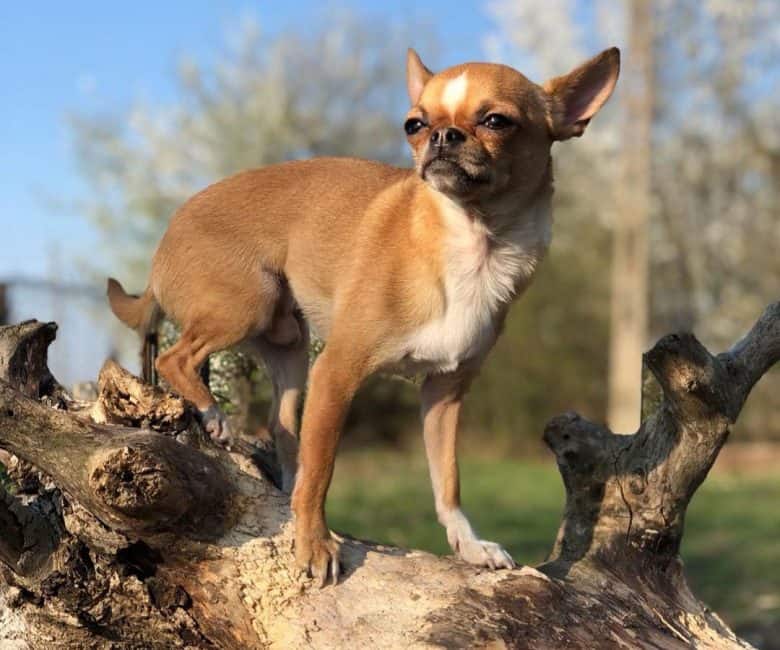
The Aztecs believed that Techichis had supernatural abilities, like seeing the future and helping the souls of the deceased cross into the spirit world.
As a result, Techichis were often cremated alongside humans after they passed.
Techichis remained a cornerstone of indigenous Mexican civilization for hundreds of years. When the Spanish overtook the Aztecs in the 16th century, Techichis slowly faded from existence.
Centuries later, however, American tourists took note of a petite canine in the Mexican state of Chihuahua. That breed of dog was–you guessed it–today’s Chi-chi.
These tourists began importing Chis to the United States sometime around the 1850s. By 1904, the American Kennel Club registered its first-ever Chihuahua.
The Chihuahua goes Hollywood
It didn’t take long for the breed’s popularity to skyrocket. These pocket-sized pooches were all the rage after world-famous Latin musician Xavier Cugat was spotted with one in the 1930s and 1940s.
Since then, Hua-huas have solidified their place in American society. Not only are they ranked 11th out of 155 AKC-recognized breeds, but they’ve also created quite a stir in films and on TV.
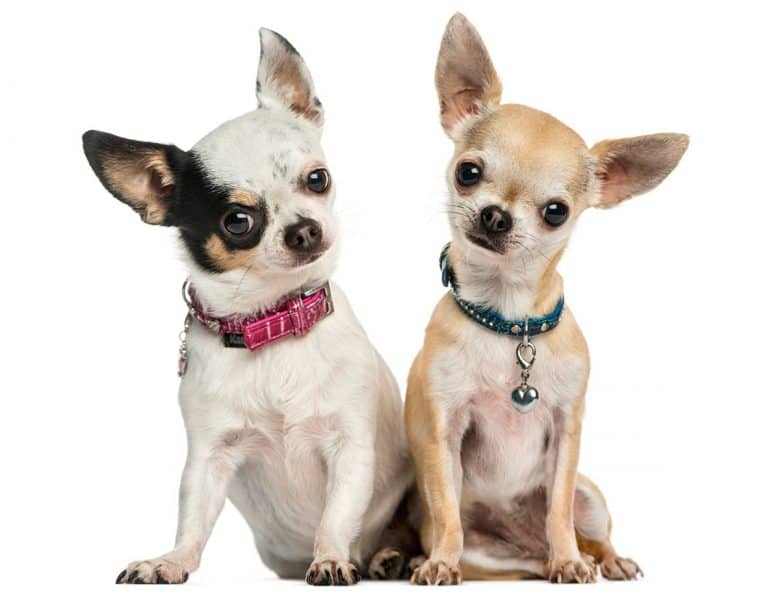
By the late 1990s and early 2000s, Chis were everywhere. You probably remember Taco Bell’s famous mascot, an adorable Chihuahua named Gidget. Even Paris Hilton had a famous Chihuahua!
Chis also had a starring role in Ren & Stimpy, Invader Zim, Legally Blonde, and Oliver & Company. And who could forget the classic Beverly Hills Chihuahua?
Millennials practically grew up watching Chi-chis’ bold personalities light up the big screen. But what Hollywood didn’t mention were the types of Chihuahuas.
Apple head and deer head Chihuahuas: what’s the difference?
Apple head Chihuahuas have a rounded skull, much like the fruit that is their namesake. With short, pointed noses and bulging eyes, apple head Chis are what most people picture when they think of Chihuahuas.
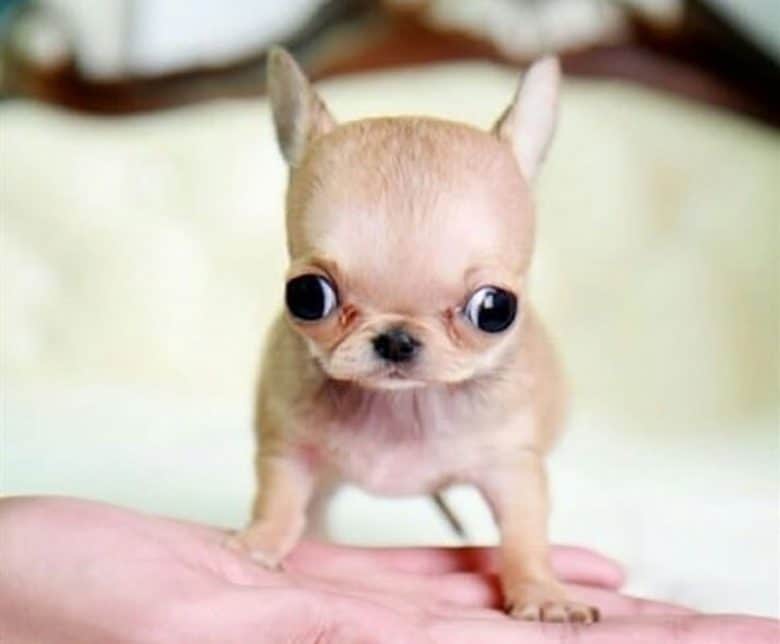
All this cuteness comes at a cost, however. Apple head Chihuahuas are often born with moleras, or soft spots, in their skulls.
They’re also prone to hydrocephalus, which can cause a whole host of health issues (more on that in a bit).
Deer head Chihuahuas are more fawn-like in appearance, with a greater slope to the forehead.
With longer muzzles, legs, and bodies, deer head Hua-huas are slightly larger than their apple-headed counterparts.
While these physical differences frequently disqualify deer head Chihuahuas from showing, they contribute to an overall healthier dog.
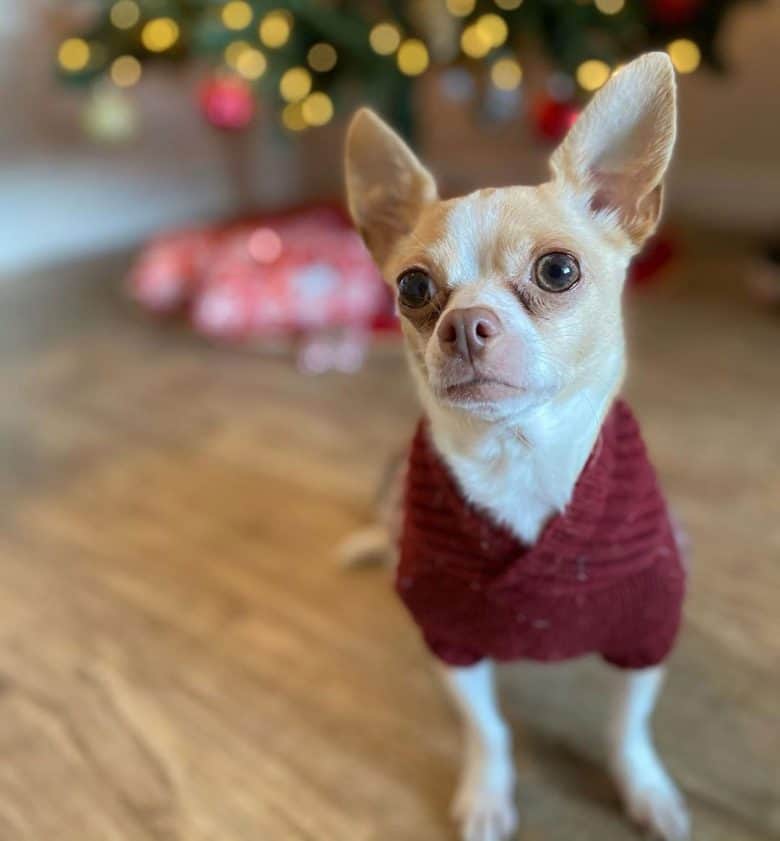
The American Kennel Club and UK Kennel Club recognize both of these Chihuahua varieties.
The Chihuahua Club of America is the breed’s official AKC Parent Club, but you can find plenty of independent Chi associations all over the country.
What does a Chihuahua look like?
Chihuahua bodies are longer than they are tall, but not by much. Particularly in males, shorter, well-proportioned bodies are more aligned to the AKC breed standard.
The presence of a soft spot won’t disqualify a Chi-chi pup, so long as they have a dome-shaped head. Their eyes should be bright, round, and expressive without excessive bulging.
Brown eyes are far more common in Chihuahuas, though blue eyes are possible. Keep in mind, though, that lighter eye colors are considered a fault in the show ring.
Perhaps the shining characteristic of the Chihuahua dog breed is the pair of satellite dishes on top of their heads. Oh, did we say satellite dishes? We meant ears.
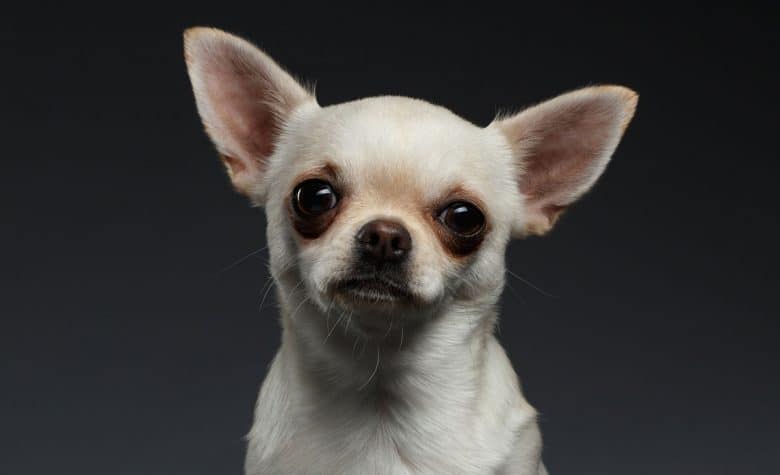
Hua-huas are instantly recognizable for their oversized, pointy ears. Your Chi’s ears may be wider-set or closer together. They could also have feathering and fringe along the outer edges.
The Chihuahua’s muzzle should be short, but not smushed. Their noses are usually black or self-colored. Self-colored Chis may be lighter in color overall, with a tan, blue, chocolate, or pink nose.
You might have seen a Chi-chi with an overbite or underbite. Note that while the AKC breed standard allows for a couple of missing teeth, purebred Chihuahuas should have a level or scissor bite only.
Another defining feature of the Chi is their curled tail. The degree of your Chihuahua’s tail curve will vary.
You can find Chihuahuas with just a moderate “C” shape, while others have tails that graze the tops of their backs.
Lastly, we need to talk about Chi-chi paws. Everyone loves a good set of doggie toe beans.
Chihuahua feet should be petite and uniform. Chis with elongated toes (hare feet) or overly-compact toes (cat feet) fall outside of the breed standard.
How big do Chihuahuas get?
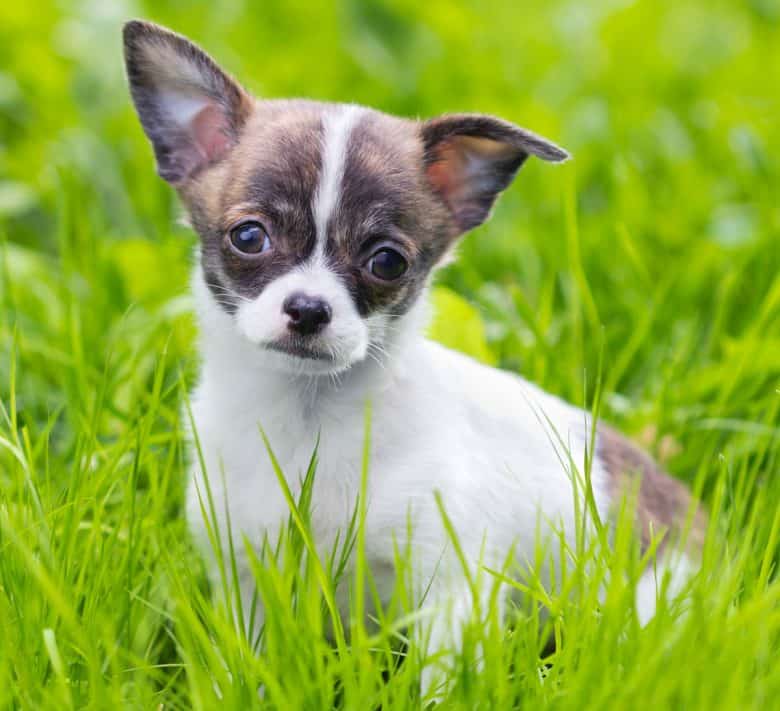
Did you know that the Chihuahua is the smallest breed in the world?
Toy dogs often reach their full-grown size by 8-12 months of age. During that time, your Chi will only grow to a mere 6-9 inches (15-23 cm) in height and 3-6 pounds in weight (1-3 kg).
Male and female Chi-chis are roughly the same size, with females usually reaching a max height of 7 inches (18 cm).
Some Chihuahuas are even smaller than this, though we don’t recommend you buy one.
You might see breeders advertising teacup or micro Chiahuahuas. These are really just the runts of the litter. And what isn’t advertised are the many health issues that plague smaller-than-normal Chis.
Cute as these miniature pups are, carefully consider if it’s worth the risk. You don’t want to fall in love with an ailing pooch, nor do you want to contribute to unsound breeding practices.
It’s also possible to find slightly larger Chihuahuas, up to the 12-pound (5 kg) mark.
While this falls outside of the AKC’s breed standard, some owners may prefer a sturdier, heftier Chi. Especially in kid-friendly families, those extra few pounds can make a big difference!
The Chihuahua’s small size bodes well for urbanites. This breed is well under most apartments’ weight restrictions.
And because Chis don’t need much space, even the tiniest New York studio will feel like their own personal palace.
Chihuahua coat & color
In addition to apple head and deer head Chihuahuas, you can find smooth-coated and long-coated Chis.
Smooth coat Chihuahuas have short, sleek fur. Despite their compact coat, this Chi-chi variation frequently sports a neck ruff.
Sometimes, smooth-coated Chis have a thicker undercoat. This isn’t always the case, though.
The long coat Chihuahua, on the other hand, is fluffier than a stack of buttermilk pancakes.
With either a flat or wavy texture and plenty of fringe and feathering, this Hua-hua could give your favorite goose-down pillow a run for its money.
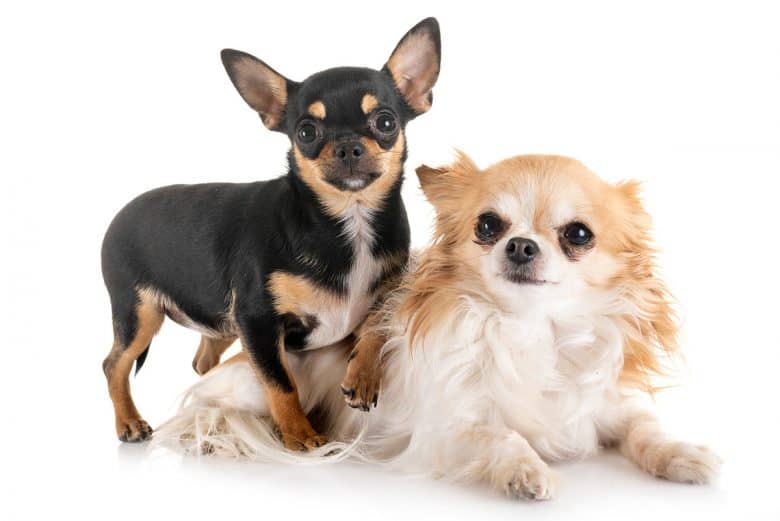
Not enough variety for you? Some Chis have no hair at all. These hairless Chihuahuas are quite rare and are often confused with other hairless breeds.
If you do happen to find a totally bald Chi-chi, keep in mind that their lack of fur is a genetic anomaly. Their appearance could be the result of alopecia caused by overbreeding.
While alopecia by itself isn’t necessarily harmful, your dog’s skin could be more vulnerable to extreme weather or irritation.
Alopecia’s link to unsound breeding practices is also of concern. Your hairless pup could have other, more serious problems lurking beneath the surface.
The great majority of Chihuahua owners will have a fully-furred pooch on their hands. Most of these Chis will come in shades of black, chocolate, gold, fawn, cream, white, merle, gray, or brindle. Check out our article guide about Chihuahua colors to learn more.
Temperament: are Chihuahuas good pets?
Hua-huas are interesting little dogs. They’re frequently described as having a terrier-like spirit.
But whether or not a Chi-chi is a good pet isn’t the best question to ask. Instead, we need to think about if the Chi-chi is a good pet for your situation.
Chihuahuas are best suited for homes with older children or no kids at all. Their small size makes it far too easy for rambunctious toddlers to injure them accidentally.
Make sure the little ones behave gently and only handle your Chi while they’re sitting on the floor to prevent falls.
Never let them disrupt your dog during mealtimes or naps, either.
Chis won’t hesitate to defend themselves if they feel scared or threatened. To keep everyone safe, always monitor playtime and teach your children how to respect your pup’s boundaries.
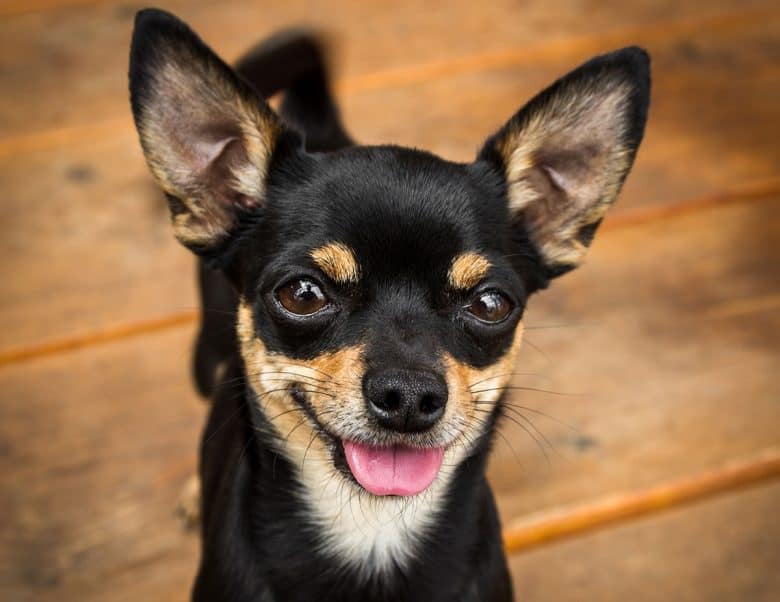
The good news is that dogs who protect themselves also protect their packs. Your Chihuahua will make a fantastic watchdog, even if their bark is worse than their bite.
Chis will yip and yap to alert you to potential danger, and they won’t back down. They could be up against a strange human or a 70-pound Rottweiler, and still, your Chihuahua won’t be deterred.
This confident territorial streak is a blessing and a curse, though.
Chi-chis have a flair for bossiness and independence. If you know how to handle that kind of canine, you’ll do just fine. If your pack leadership is lacking, however, your Chi will quickly rule the roost.
Hua-huas have an innate sense of loyalty. Brash and independent as they are, their people are the center of their universe.
Chihuahua dogs often bond closely with a single family member, but they love to spend time with the whole pack.
When Chihuahuas spend too much time away from their beloved families, separation anxiety can ensue. They’ll be happiest in a home with constant companionship.
Because of their sensitive nature and devotedness, Chis can make great pets for first-time owners, singles, seniors–you name it.
They aren’t perfect, though. And they aren’t for everyone.
What problems do Chihuahuas have?
Feisty to the core, Chis could be the Small Dog Syndrome spokesmodels. They could fit in the palm of your hand, but good luck telling them so. Chihuahuas see themselves as the Incredible Hulk of the dog world.
While some dog owners find their spunk endearing, their personalities can become unmanageable without the right training. What’s worse, an aggressive Chihuahua is an endangered Chihuahua.
Chis are just too small to pick fights or engage in reactive behavior. If they mess with a bigger dog with the wrong temperament, they could easily get hurt.
Similarly, if they develop a snapping or nipping habit with humans, you could be held liable for damages.
So what’s the best way to reduce territorial or reactive behavior? The answer is simple: a solid training and socialization program.
Are Chihuahuas smart…or hard to train?
For headstrong dogs of any size, strong leadership is absolutely essential to the dog’s safety and wellbeing.
Especially if this is your first time owning a Chihuahua, you must make positive reinforcement and consistent training a priority.
Don’t let their stubbornness fool you! Chihuahuas are intelligent, quick learners. They’ve been known to impress at obedience and agility trials, so they’re more than capable of adopting new habits.
Take a minute to enjoy all of Nicole the Hua-huas tricks. She’s one well-trained Chihuahua!
In addition to basic obedience training (and a party trick or two), you want your Chi-chi to be socialized ad nauseum.
While they’re still young, introduce them to other animals. The more exposure they can get to dogs, cats, and common house pets, the better chance you have of preventing fearfulness or reactivity.
You should teach them proper introductions with people, too. Expose them to young kids, the elderly, and everyone in between.
Give them frequent opportunities to practice their people skills in a structured environment.
That said, you have to understand your individual pup’s limitations.
Some Chihuahuas are friendlier than others, and you won’t always know that until you’ve had them awhile. Learning your Chi’s boundaries and behavioral tells is just as important as teaching them your expectations.
If your Chi-chi is naturally more dominant, keep that in mind during social interactions. Don’t force them to meet another animal or person if you sense trouble.
Likewise, you shouldn’t adopt another dog (especially a larger dog) without testing their personalities first.
Caring for your Chihuahua dog
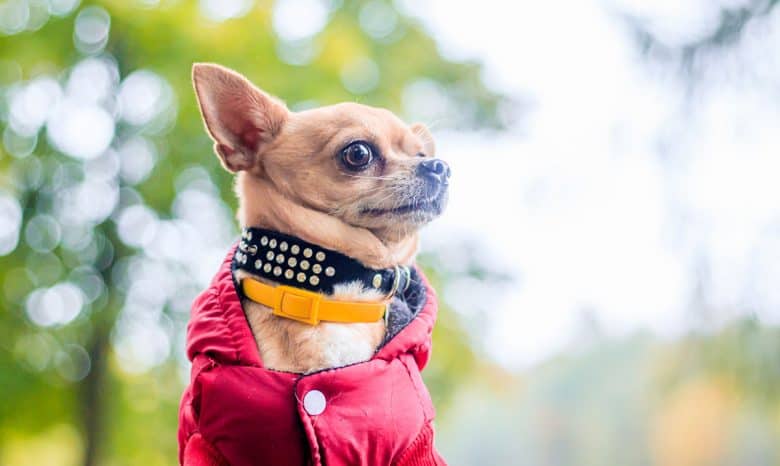
As you may have guessed, the itty-bitty Chi-chi can be sensitive to cold weather. Their tiny, thin bodies combined with icy temperatures can give them a case of the shivers.
Use this as an opportunity to go doggie clothes shopping, and invest in a few warm outfits for your pup.
During your shopping spree, go ahead and add grooming essentials, delicious kibble, and a few toys to your cart. Your Chi will thank you for it!
How much grooming do Chis need?
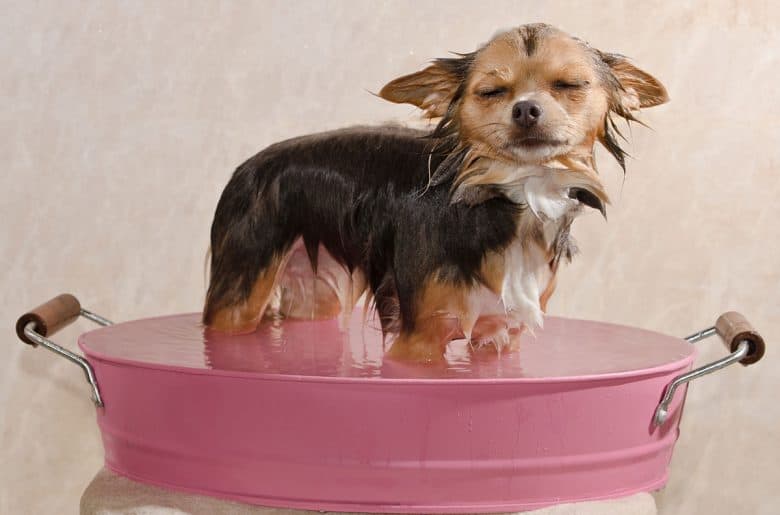
The amount of time you devote to grooming will depend on your Hua-hua’s coat. Chihuahuas tend to be low shedders in general, but you can still expect loose hair or clumps of fur on your furniture.
Adjust your brushing routine based on your pup’s needs. For shorthaired Chis, weekly grooming is sufficient to keep shedding at bay. For longhaired Chihuahuas, a once-a-day brushing is necessary to prevent tangling.
Depending on Fido’s coat length, you might need a grooming mitt or pin brush. Flea combs have been known to work well, too, especially for finer-haired Chihuahuas.
As Chihuahuas are prone to dry, waxy ears, you should clean their ears daily. Use a clean cloth to wipe their ears.
Apply baby oil or coconut to their ears’ outer edges to keep them moisturized. Avoid overbathing as this can further dry out their skin.
While you’re at it, wipe your Chi-chi’s eyes every day. Drainage can lead to tearing stains and fur discoloration.
Chihuahua nails grow quickly, so plan on regular trims. Every dog is different, but once or twice a month is usually plenty.
Dental care is big for Chihuahuas and other small-jawed breeds. You’ll want to brush your Chi’s teeth at least 2-3 times a week, if not every day.
Perhaps the most important of your grooming routine is a careful inspection. While you beautify your pup, be on the lookout for odor, redness, or rashes.
A watchful eye during grooming can tip you off to potential health issues lurking beneath the surface, protecting both your pooch and your wallet.
Feeding: what type of diet is best?
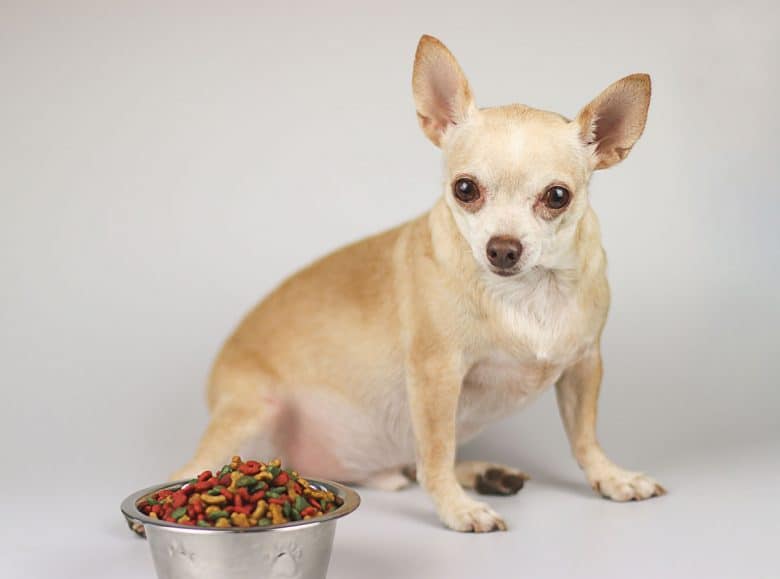
As little dogs, Chis only need a ¼-½ cup of dog food each day. Their exact caloric intake depends on their age, size, and energy level. Your vet can help you determine the right amount for your pup.
We prefer dry kibble over wet chow for Chihuahuas, as chewing dry food can help reduce plaque buildup.
Which brand you choose is up to you, but keep in mind that Chis can be picky eaters. They deserve the best, and they know it.
Many dog owners split their dog’s food into two meals, but you might feed your Chi more often. Giving them smaller meals spaced evenly throughout the day can keep them active and stave off low blood sugar.
Just be sure not to exceed the recommended feeding guidelines.
Chis are miniature gluttons and will eat themselves into obesity. Put them on a strict feeding schedule and give them enough exercise to prevent unhealthy weight gain.
How much exercise do Chihuahuas need?
As a high-energy companion dog, Chis need at least 20-30 minutes of dedicated exercise with their owners.
Tiny as they are, Chihuahuas can easily get their steps in just by running around the house. Watch Buddy the Chi-chi puppy having a blast hopping and squeaking on the living room carpet!
Want Fido to get a little sunshine? Take your Chihuahua for a brisk walk or toss their favorite toy around the backyard. Just make sure you supervise all outdoor activities!
Little dogs like the Chi-chi can easily slip through holes in your fence–or worse, be mistaken for prey by a hungry hawk.
You’ll want to take other precautions, too.
Chihuahuas don’t come with an off switch. Keep exercise sessions short, and let your pup know when it’s time to rest. Not only will this help them from overheating, it’ll keep their joints happy, too.
Hua-huas aren’t built like Border Collies, after all. If you want your Chihuahua pup to accompany you on long runs or jogs, invest in a comfy pet carrier.
This will let you spend quality time with your pooch without damaging their knees and elbows.
Are Chihuahuas healthy?
If you’re in the market for a companion with longevity, the Chi-chi might just do the trick. With their impressive lifespan, your Chihuahua will be by your side for 14-18 years!
The surest way to maximize canine life expectancy is to stay on top of their health. Regular, preventative care is a must. You also need to know what potential ailments could befall your pooch.
An alarming symptom for new Chihuahua owners is their visible shaking.
Scientists aren’t quite sure of the physiology behind shivering in Chihuahuas, but it seems to indicate that your dog is cold, nervous, or excited.
If your Hua-hua starts shaking, try to move them out of the stressful situation. If that doesn’t work, rub their bodies or wrap them in a blanket or sweater to raise their body temperature back to normal.
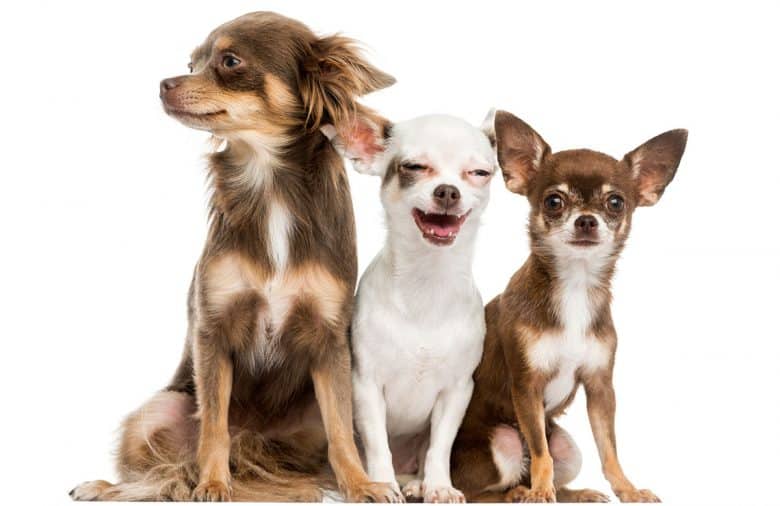
The Chihuahua’s soft spot (known as a molera or open fontanel) makes them vulnerable to head injuries and hydrocephalus, or fluid on the brain.
Head injuries can be avoided through careful handling, but hydrocephalus requires medical attention.
Chi-chis are prone to hypoglycemia, or low blood sugar, as well. If your pup seems lethargic, passes out, or appears disoriented, low blood sugar could be the culprit.
You might see your Chi limping or running only on three legs. This is a telltale sign of patellar luxation. This happens when the patella, or kneecap, becomes displaced.
Sometimes, dogs can correct a luxating patella on their own. In other instances, vet care is required.
A collapsed trachea is common in small breeds, too. Tracheal collapse can be genetic or brought on by environmental factors, like overfeeding.
If your Chihuahua develops a “goose honk” or cough, suspect this medical condition.
Perhaps the most serious of the Chi’s health conditions are those affecting the heart. In fact, most Chihuahuas die from an unhealthy heart.
Heart murmurs and pulmonic stenosis are among the most common cardiac issues.
Talking about your furbaby’s health problems can be a heavy subject. But how you care for your dog’s wellbeing can make all the difference in preventing a minor condition from becoming major.
Several of these health issues have similar symptoms and could require invasive procedures if left untreated.
Being proactive, observant, and educated is absolutely critical if you want your Chi-chi to serve as your trusty lapdog for years to come.
How much does a Chihuahua puppy cost?
Popular purebred dogs cost a pretty penny. Your Chihuahua puppy will set you back anywhere from $500-1500.
Keep in mind that there’s no ceiling here. Some breeders have been known to charge up to $5000!

The price of a Chi-chi puppy will ultimately depend on the Chihuahua type, the breeder, and the litter size.
Teacup Chihuahuas, for example, are closer to the $2000 mark. Similarly, the average litter size for a Chihuahua mama is 2-5 puppies. Anything above or below that norm could influence the breeder’s pricing.
Because your Hua-hua puppy’s temperament and health are directly impacted by the quality of their breeder, you need to be a discerning shopper.
These tips can help you make the best decision in buying a Chi-chi puppy:
- Breeders should provide health clearances for their puppies and breeding stock. You’re specifically looking for proof of knee and heart health.
- Breeders should socialize their pups long before they’re ready to be sold. These early experiences with humans and dogs are what set the foundation for your Chihuahua’s friendliness–or lack thereof.
- Breeders should ask about your lifestyle and living situation. If a breeder never bothers to inquire if you have kids at home or if you’ve owned toy breeds in the past, that’s a bad sign. It could indicate that they’re new to professional breeding or that they don’t care about their pups.
- Breeders should only mate Chihuahuas that are 2 years old or older. A dam’s age at the time she gives birth can impact her health and the health of her pups. Plus, some health certificates aren’t issued to puppies to allow time for health conditions to appear.
Chihuahua breeders & kennels
By this point, you’re probably ready to start looking for your forever furry friend. Here are a few breeders with AKC-eligible Chihuahua puppies for sale:
- Salem’s Finest AKC Chihuahuas
- BonBon Chihuahuas (Houston, Texas)
- Brislin Chihuahuas (Dunmore, Pennsylvania)
- Chimney Mountain Chihuahuas
Chihuahuas for adoption
Prefer to adopt? Or perhaps you want an adult dog instead of a puppy? Check out these Chihuahua and Chihuahua mix rescue organizations:
- Second Chance Chi Rescue
- Sadie’s Safe House Chihuahua Rescue
- Texas Chihuahua Rescue
- Limbo Chihuahuas (South Pasadena, Florida)
How do other breeds compare to Chihuahuas?
As much as we love the Hua-hua’s flair, we know that not every dog will fit every home. So how do other small dog breeds stack up?
Dachshund vs. Chihuahua

Move over, Hua-hua. The weenie dog is coming through!
Dachshunds are known for their elongated spines. Despite their stubby legs only reaching 8-9 inches (20-23 cm) tall, Doxies can weigh up to 32 pounds (15 kg).
But it’s their curious nature and high prey drive that really set them apart. A foolproof fence is a must to keep Dachshunds from heading out alone for the thrill of the hunt!
Pug vs. Chihuahua
While still tiny dogs, Pugs are sturdier than Chi-chis. Weighing in at 14-18 pounds (6-8 kg) and standing 10-14 inches (25-36 cm) tall, Pugs are manageable without being too fragile.
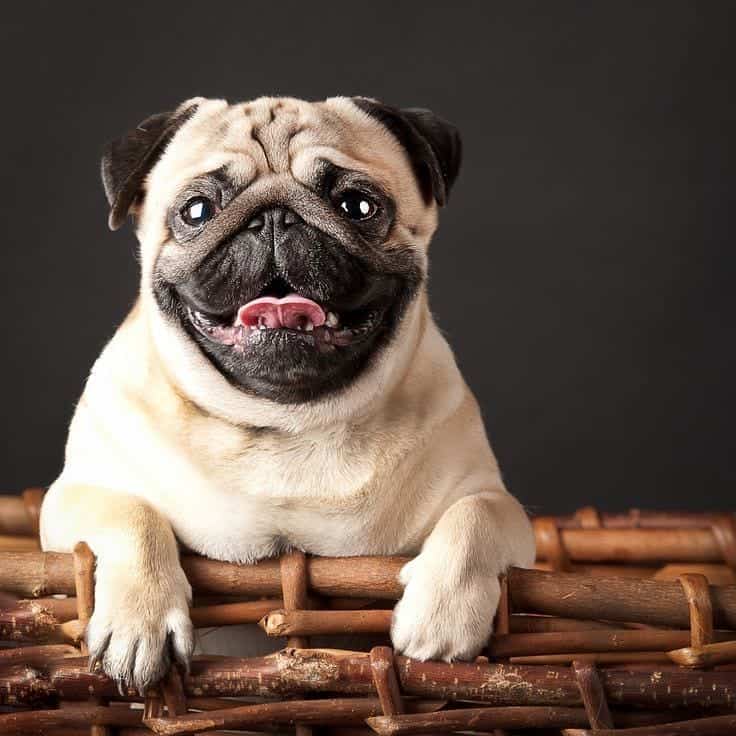
They also tend to be calmer and more relaxed. The Pug’s added patience and girth can make them a better match for kid-friendly households.
The Pug has a much shorter muzzle than the Chihuahua, though. This puts them at greater risk for breathing difficulties and can make traveling or exercising with your pet more difficult.
Papillon vs. Chihuahua
Papillons look like a fancy-eared longhaired Chi. They aren’t much bigger than Chihuahuas, either. An adult Papillon weighs an average of 4-9 pounds (2-4 kg) and measures 8-11 inches (20-28 cm) at the withers.
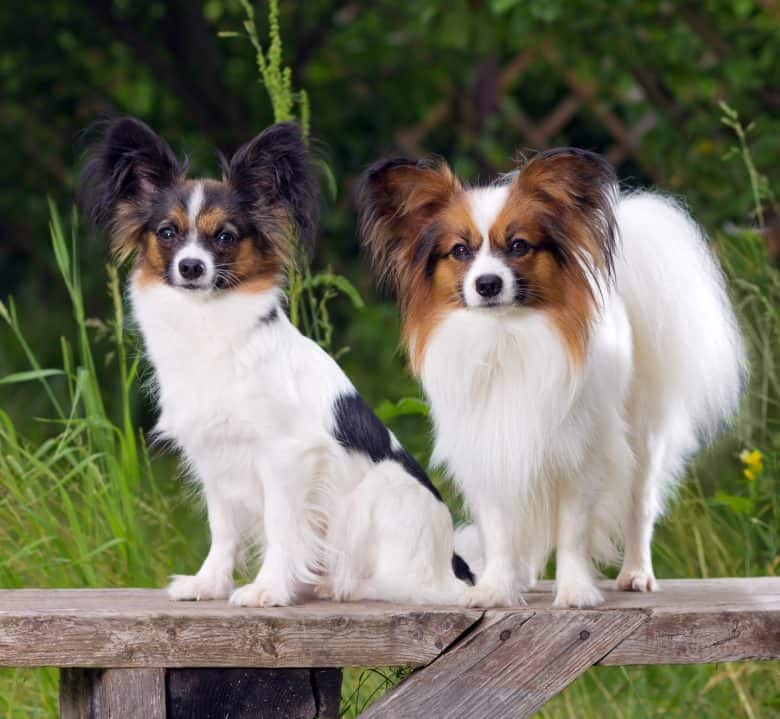
These dogs have a few key differences, though.
For one, Papillons have a reputation for being easier to train. They also show less aggression and reactivity, which could bode well for multi-pet families.
Papillons can be much more demanding when it comes to grooming, however. You have the option of getting a low-maintenance, short-coated Chi, but Papillons have longer fur that requires more attention.
Pomeranian vs. Chihuahua
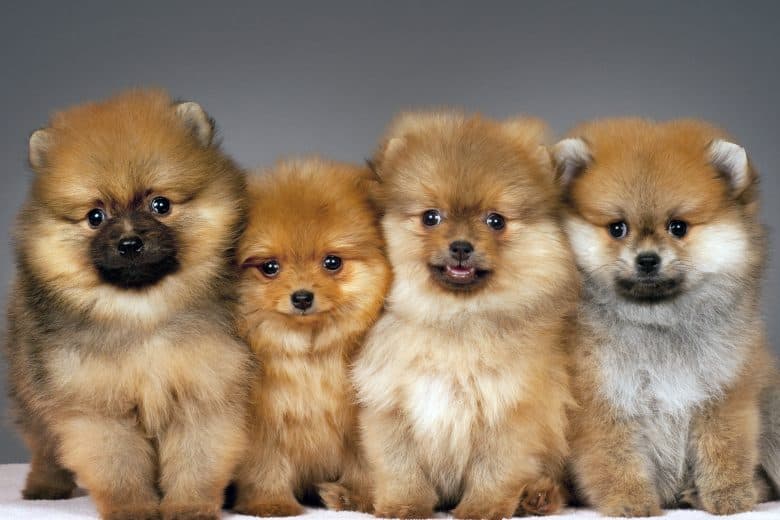
Think of Pomeranians as the Chihuahua’s fuzzier cousin. These dogs are neck and neck when it comes to size: Poms weigh just 3-7 pounds (1-3 kg) and stand 6-7 inches (15-18 cm) tall.
When it comes to personality, Pomeranians and Chi-chis share several similarities. Both are prone to sass, and neither has any self-esteem issues.
So what distinguishes a Pomeranian from a Chihuahua? The noise level. Poms are notorious barkers with a lot to say. If you want a ball of talkative fluff, the Pomeranian is the canine for you!
What about Chihuahua mixes?
Chihuahua Mixes are great choices if you can’t decide between two breeds. Why choose one dog when you can get the best of both worlds through a Chi-chi cross?
The Pug Chihuahua mix, or Chug, gives you a lovable goofball with a confident streak.
Chions combine the Hua-hua’s boldness with the Papillon’s sociability.
Besides having an adorable name, the Chiweenie (Dachshund Chihuahua mix) is a playful, yet motivated, hunter.
Consider a Pomchi, the Pomeranian Chihuahua mix, if you want a wooly pup with no fear whatsoever.
Chihuahuas: What’s good and bad about ‘em
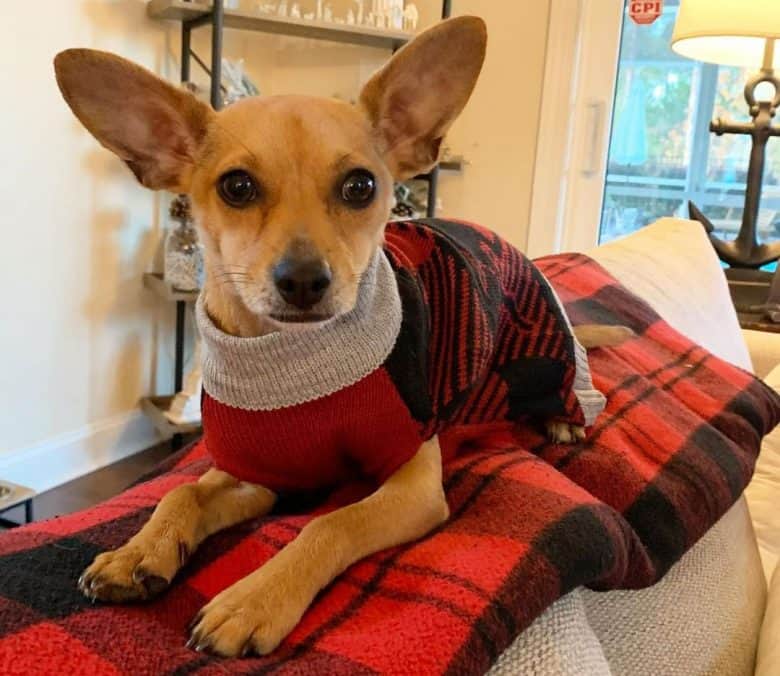
Chihuahuas have a personality all their own with an undeniable fire.
Let’s sum up the pros and cons of owning a Chi-chi so you can decide once and for all if this breed is right for you:
- Pros: lapdog size, easy to exercise
- Cons: can come across as mean, not great for families with children
What do you think about this scrappy pooch? Share your thoughts in the comments!
Further reading: More about Chihuahua
Cess is the Head of Content Writing at K9 Web and a passionate dog care expert with over 5 years of experience in the Pet Industry. With a background in animal science, dog training, and behavior consulting, her hands-on experience and extensive knowledge make her a trusted source for dog owners.
When not writing or leading the K9 Web content team, Cess can be found volunteering at local shelters and participating in dog-related events.
